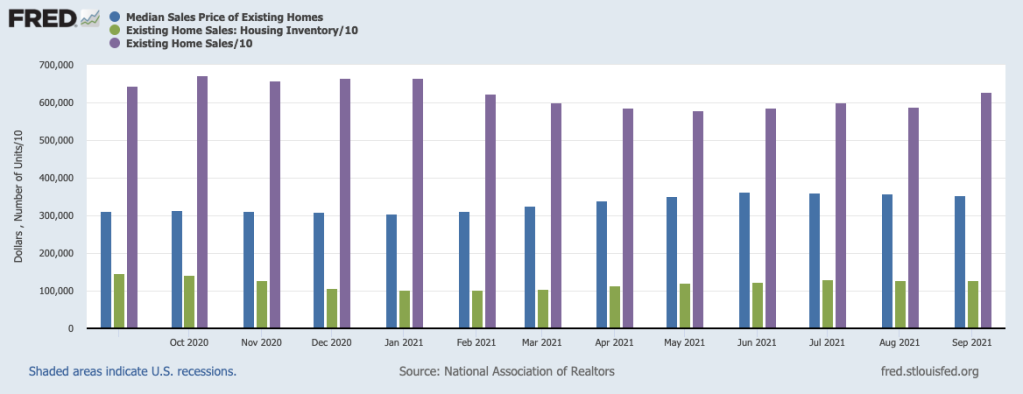One key yardstick of U.S. house pricing fell for the third-consecutive month in September.
The National Association of Realtors said Thursday its median selling price of an existing U.S. house was $352,800 last month — the third consecutive drop from June’s peak of $362,800, or a 2.8% drop. Still, the cooling from a once red-hot homebuying market left the median 13.3% above September 2020 — the smallest year-over-year gain of this year.
Sales of previously occupied U.S. homes bounced back in September to their strongest pace since January — sales rose 7% compared with August to a seasonally-adjusted annual rate of 6.29 million units.
But the price hikes have trimmed the number of house hunters who can afford to buy. Sales were down 2.3% compared with September 2020. The share of first-time buyers eased last month to 28%. And looking ahead, housing affordability isn’t likely to improve.
“Some improvement in supply during prior months helped nudge up sales in September,” Lawrence Yun, NAR’s chief economist, said in a statement.
There were 1.27 million homes for sale last month, down 13% from a year ago. At the current pace it would take 2.4 months to sell all the homes on the market, compared with an average of about 4 months before the pandemic.
Homes that are available remained on the market for an average of 17 days last month, compared to 21 days a year ago and 86% of the homes sold in September were on the market for less than a month.
“The days of inventory being down 20% or 25%, those days are over,” Yun said. “The decline is lessening and soon in 2022 we’ll begin to see inventories are higher year-over-year.”
Yun noted that a dip in mortgage rates in August gave buyers urgency to close deals on homes, which translated into the September increase in completed transactions.
While the average rate for a 30-year mortgage remains near historic lows, it has been inching higher since August, when the weekly rate averaged 2.77%, according to mortgage buyer Freddie Mac. This week, the average rate rose to 3.09%, the highest level since April, when it peaked at 3.18%. A year ago, the rate averaged 2.8%. That rise cut a would-be homeowner’s buying power by 3.7%.
Economists expect mortgage rates to rise up to 4% next year as the Federal Reserve takes action to control rising inflation. The central bank is widely expected to announce a timetable for reducing its monthly bond purchases at its policy meeting next month. Those bond purchases have helped keep mortgage rates at ultra-low levels for much of the last 18 months.
Homes purchased in cash rose 23% in September from the previous month. Individual investors, who account for many cash sales, accounted for 13% of all home sales last month.
Despite the increase in sales last month, there are signs the housing market frenzy that drove 20% to 25% annual increases in the median home price is easing. Properties on the market are receiving fewer multiple offers and buyers increasingly are refusing to waive their right to a home inspection or appraisal, Yun said.
Bloomberg News, Associated Press, and the Southern California News Group’s Jonathan Lansner contributed to this report.










